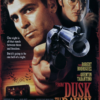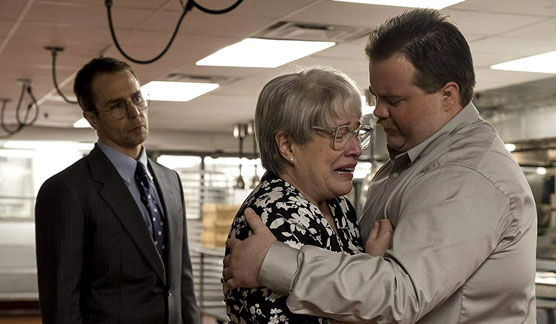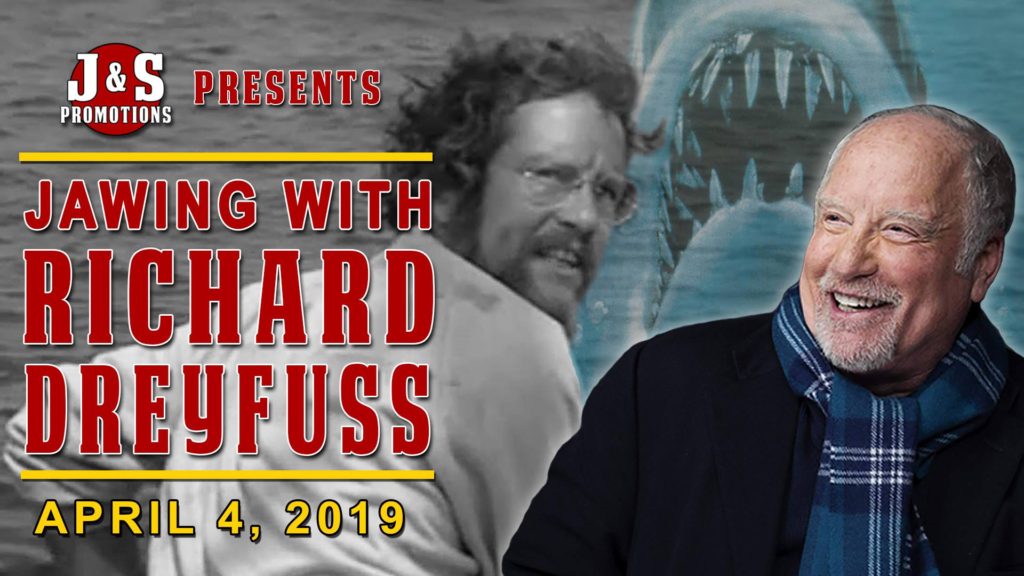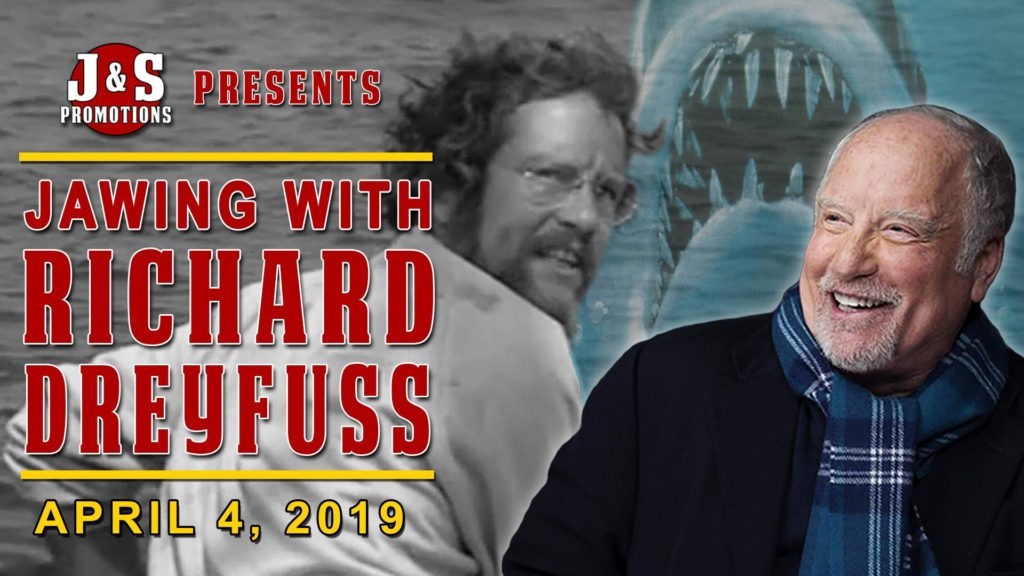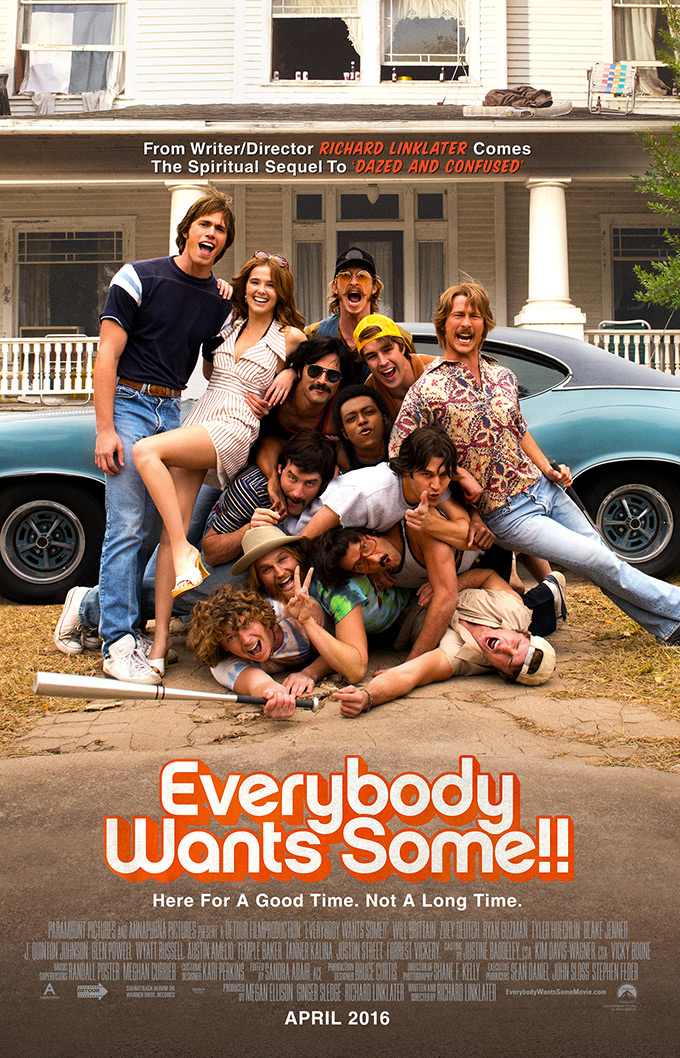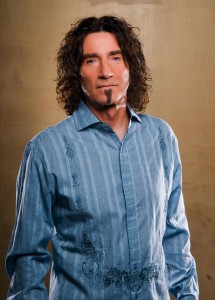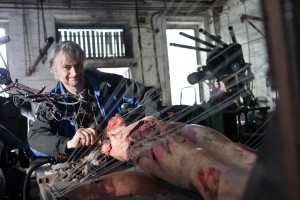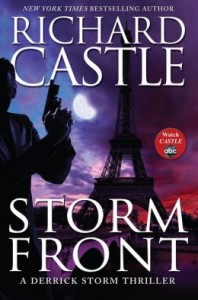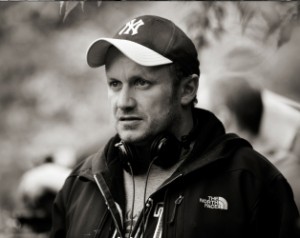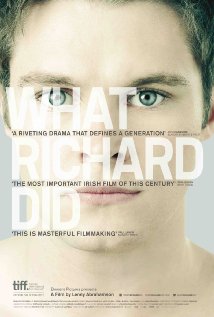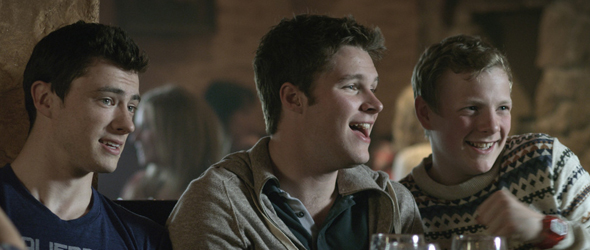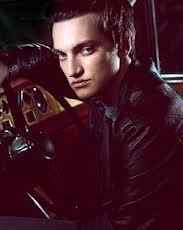With my 15th
birthday approaching, my father asked me what I wanted to do. Having been intrigued by the television
commercials for a new film, “Dog Day Afternoon,” I told him I wanted to see
that movie. On Sunday, September 21,
1975, my father dropped me off at the University Square Mall Cinema in Tampa to
see the movie. Sadly, I didn’t know it
was rated “R” and was told I couldn’t buy a ticket. As I began to dejectedly walk away, the girl
in the ticket booth called out to me “have you seen JAWS yet?” I hadn’t.
124 minutes later, my life was changed.
I include this because of what I did after the film. Like a normal kid, I wrote fan letters to the three stars. I soon received a letter from Richard Dreyfuss’ cousin, Arlene, who informed me that she ran Richard’s fan club. If I wanted to join, it would cost me $5.00 (a week’s allowance at that time). I immediately sent her the money, along with a note saying “if you ever need any help.” Within a few months, I was helping her with the club – basically I handled the fans east of the Mississippi river. It was a great time for a teenager. I’d scour the newspapers for articles about Richard and each month would send out a packet to the fans, which usually consisted of Xeroxed newspaper clippings and the occasional photograph. Not sure how many members were in the club, but when it disbanded in November 1978, shortly after the release of “The Big Fix,” I was dealing with almost 1,000 fans.
I’ve been very fortunate to
have met Mr. Dreyfuss twice in my life.
Once, in Baltimore, when he was on the set of the film “Tin Men,” and in
July 2017 when we were both guests at a Hollywood Celebrity Show. At that show I was able to stand near his
table and listen to him tell the most amazing stories. I mention this because Mr. Dreyfuss is
currently traveling around the country, offering fans the opportunity to take
in AN EVENING WITH RICHARD DREYFUSS. He
will be in Kansas City this week (April 4th) and I have been honored
to have been chosen the moderator of the event.
Call it practice, but I had the opportunity to speak with Mr. Dreyfuss
and ask him some questions, a few of which may be included when we’re together
Thursday night.
Mike Smith: What led you to pursue a career in acting?
Richard Dreyfuss: Wow! I
don’t know….what leads someone to follow what they love? I don’t think I really had a choice.
MS: Was there a film or performer that inspired
you? I acted a lot through my 20s but
couldn’t make a living at it, but the inspiration came from wanting to do what
YOU did. I know you’re a fan of actors
like Charles Laughton, Irene Dunne and Spencer Tracy, among others. Were they the catalyst?
RD: They were, of course. I have no memory of NOT wanting to be an
actor. I think the first time I got on
record was when I was nine years old. We
had just moved to California from New York, and I said to my mother, “I want to
be an actor.” And she said, “Don’t just
talk about it.” So I went down to the
local Jewish Community Center and auditioned for a play. And I really never stopped. I realistically never had more than ten days
when I wasn’t acting in a play, or a scene or a class or a job until I was
27.
MS: You made your film debut in two very
different films in 1967 – “The Graduate” and “The Valley of the Dolls.” What do you think is the biggest difference
between filmmaking then and today?
RD: There are so many. The general level of quality for an actor has plummeted. When I was younger I never hesitated telling young actors to “go for it”…to pursue it. And now I don’t say that, because the real rewards are so rare…so few and far between The quality of scrips, from an acting viewpoint, suck. The sequel syndrome that we’re in, which we can’t seem to get out of, has really lessoned the level of quality of writing. Of story. And it seems more arbitrarily decided upon as an element of chicanery and thievery, even for a business that’s famous for it, it goes on. Film acting is not something I really recommend. If you want to be an actor in America you can live a very great and satisfied life if you never think about being a star. You can have a great life in Kansas City. Or St. Louis. Or a million other places. But if you want to go for that kind of brass ring, which I would question – if you do want to go for it, go to therapy first – you’ve got to go to L.A. or New York. And those towns are pretty sick.
MS: You famously almost turned down your role in “Jaws.” Are there any roles you turned down and then
later regretted your decision?
RD: Oh yeah.
I was once watching a movie and I kept thinking, gosh, this seems so
familiar.” I thought “oh, shit,” and
then I remembered why. And I didn’t
ALMOST turn down “Jaws,” I did turn it down.
I turned it down twice. And then
I changed my mind and begged for the part.
(NOTE: The story goes like
this. After turning down “Jaws” – twice –
Mr. Dreyfuss saw his upcoming film “The Apprenticeship of Duddy Kravitz” and
thought his performance was so terrible that he’d never work again. He then called director Steven Spielberg and
accepted the role. Of course, when “The
Apprenticeship of Duddy Kravitz” was released, Mr. Dreyfuss received rave
reviews for his performance, even being named Runner Up as the Best Actor of
1974 (tied with Gene Hackman for “The Conversation”) by the New York Film
Critics Circle.)
I will never tell you the ones I turned down that became hits. Thank God there aren’t that many of them!
MS: What fuels the passion for your work?
RD: If you asked me a question about my process –
how do you do this…what’s your method? – I would completely be unable to answer
that. And I’ve always known I’d never be
able to answer those kind of questions.
But I know that, in a business where if you’re a successful actor you
want to direct, I’ve never wanted to direct.
So I didn’t. I wanted to
act! I had made a decision when I was
very young, which probably wasn’t the most strategist thing to do in the world,
but it was the way I chose to live.
Which is to day, if I do a drama, then I’ll do a comedy. Then I’ll do a drama. Then I’ll do a comedy. That’s basically what I tried to do. And the mistake in that is that I don’t think
I ever did something enough times to establish a kind of signature recognition
of what I do. I did both. I did lots.
And I thought that was the best way for me to pursue my life. And that’s what I did for sixty years.
MS: Where do you keep your Oscar? (NOTE: Mr. Dreyfuss received the Academy Award for Best Actor for his role as Elliot Garfield in “The Goodbye Girl.” At age 30, he was, at the time, the youngest actor to win that award).
RD: For the most part, in the refrigerator. (laughs). I always want people to know about it, but I don’t want to brag. But I figure that sooner or later they’re going to open the refrigerator.
And I’m also very aware that
the list of actors who were ever nominated or won an Oscar is as great a list
as the ones who never were. It’s a
wonderful evening, but it’s rarely more than that. It’s a great evening. You’re aware of the film work because the
audience for film is in the millions. But
I make no distinction between film and theater.
And, of course, the audience for the theater work I’ve done will be
1/100th of that of the film audience. But to me, it was always – if not equal than
more important –so that is something that I travel with. I have a little bucket list of things that I
check off every once in a while. “OK,
you did a Broadway show…check.” From the
time I was nine, into my teenage years, I was always in acting classes. At acting schools. I was always with actors. And they would always talk about a “National”
theater. And I would say, “There’s never
going to be a National theater in this country.
However, there could be fifty “State” theaters. And, as someone who lives in Kansas City, I
would say to you that, something that people should not ignore, is the fact
that we are from so many different places…so many different cultures…that we
come together as Americans only when we’re HERE, and we learn to be Americans. And each of us, whether you live in Seattle
or Mississippi, you have different strains of a culture. And I have always wanted each state to have
its own theater. And, in a state like
California, which is huge, you could have two, anchored North and South. And, instead of trying to get everyone to
agree on A National Theater, we could have one in every state. It’s silly to think we can’t afford a State
theater, to be able to see how Missourians and Floridians and North Dakotans
approach theater. I think that would be
a great endeavor and a great thing to do.
Only because we teach so few things that we share. We’ve actually given
up on the notion of teaching things that are of shared values. And that’s causing this terrible breach in
the country. And we should try to find
things that we can share. And one of
them could just be the artistic endeavor of a State theater.
MS: That makes a lot of sense.
RD: And they’ll never do it (laughs).
MS: Quick follow-up to the Oscar question, one of
your fellow nominees that year was Richard Burton. When Sylvester Stallone read the name of the
winner, and you heard “Richard” did you think Burton had one?
RD: My competition was Burton, Marcello Mastroianni, John Travolta and Woody Allen. There was no easy answer. But I just knew I was going to win it. (laughs) That’s all I cared about.
MS: Me too, that night. I always wonder how people sometimes
vote. You were also nominated for “Mr.
Holland’s Opus,” but I thought you were most deserving four years earlier for “Once
Around.”
RD: It’s probably the easiest vote to define. There are two ways people vote in the Academy. One is, you vote for your friend. Or, you vote for who you think is best. In that order. It’s simple. You may not be able to predict it, but that’s the way people vote. And it’s the reason why people do vote. It’s not a mystery. The only thing wrong with the Oscars now is that there are too many other awards, and it’s cheapened the whole thing.
For more information on attending AN EVENING WITH RICHARD DREYFUSS, either in Kansas City or at a later date, click HERE.
NOTE: Mr. Dreyfuss wanted me to stress that, even though his appearance will be followed by a screening of “Jaws,” he will be discussing his entire career. So whether you’re a fan of “American Graffiti,” “Close Encounters of the Third Kind,” “Down and Out in Beverly Hills” or want to know about his fantastic cameo in “Piranha,” come on out and listen to some amazing stories.
